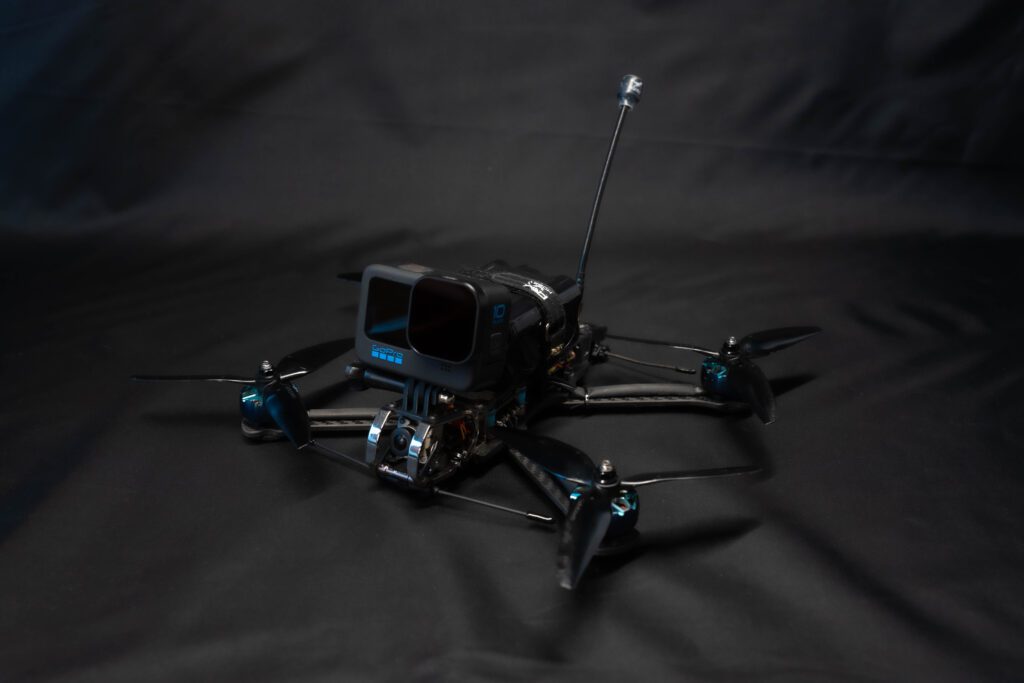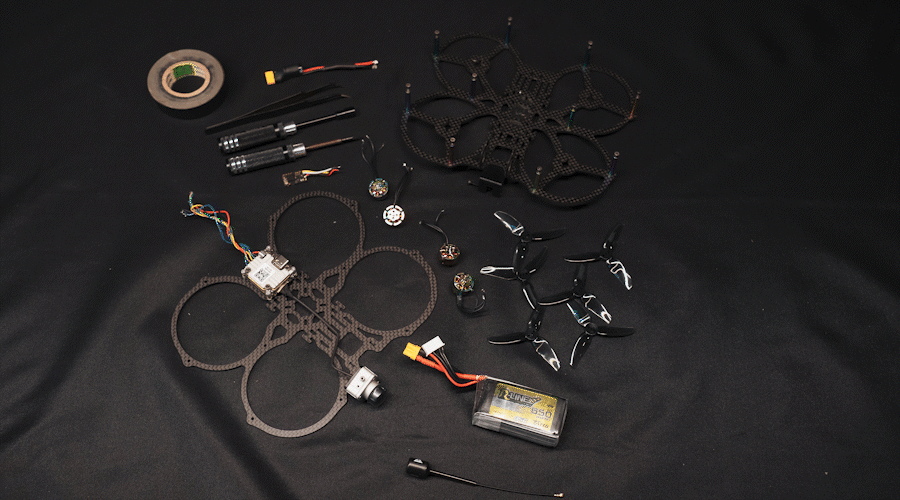Flying an FPV drone is very different compared to stabilized camera drones most people know. Here you can read about how FPV works, why we use it, what it makes so special compared to normal stabilized drones, and what our gear looks like.

We see what our drone sees through our glasses in real-time. Thus, the pilot can fly in any direction without any spatial restrictions.

The drone is controlled completely manually without any flight support systems. This enables shots that are not possible with conventional drones.

A second person always follows the flight on the screen and gives the pilot instructions or points out dangers that may not be visible through the goggles.
Our drones
Different drones for different applications areas.

Used for indoor and very close proximity flying. Propeller protection enables it to fly close to people.
Max. Speed: 50km/h
Weight: ~250g
Range: 1km
Flighttime: 3-5min

Used for indoor and very close proximity flying. Propeller protection enables it to fly close to people.
Max. Speed: 50km/h
Weight: ~250g
Range: 1km
Flighttime: 3-5min

Used for close-up shots indoors and outdoors. Propeller protection enables it to fly close to people.
Max. Speed: 80km/h
Weight: ~700g
Range: 1-2km
Flighttime: 5min

Our main filming machine for outdoor. It’s fast, agile, precise and performs great in almost every condition.
Max. Speed: 140km/h
Weight: ~800g
Range: 2-4km
Flighttime: 5-7min

Our filming machine for long distances.
Max. Speed: 100km/h
Weight: ~1kg
Range: 4-8km
Flighttime: ~20min
Customization is key

The technology behind FPV drones is relatively new and has only been around for a few years and is still evolving rapidly. There is no ready-to-fly setup that satisfies our professional needs. Therefore, most of our drones are built and configured in-house. 3D printed parts and good soldering skills support these design processes. Building new gear and experimenting with the latest technology is at least as time-consuming as flying and processing footage.
